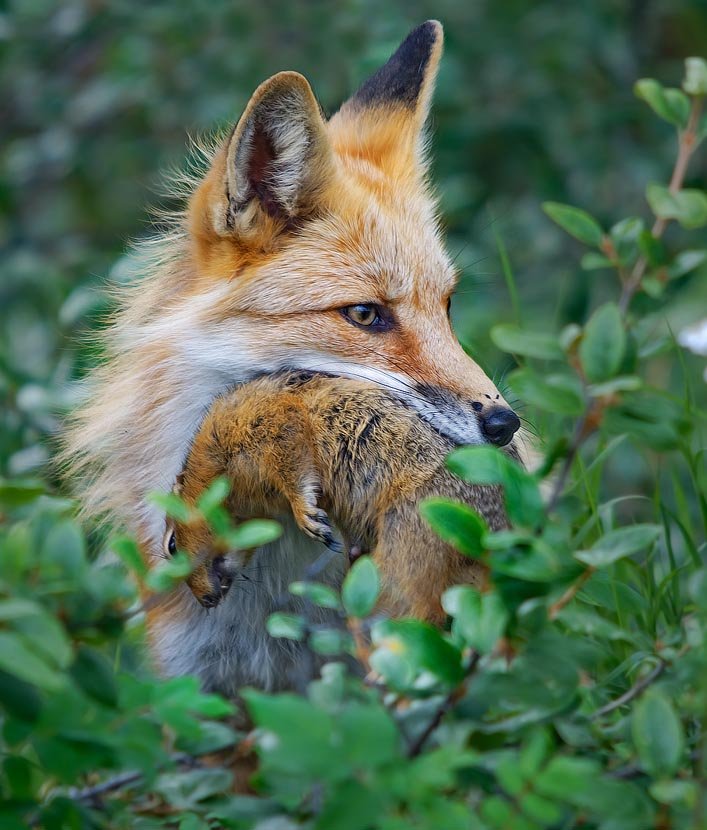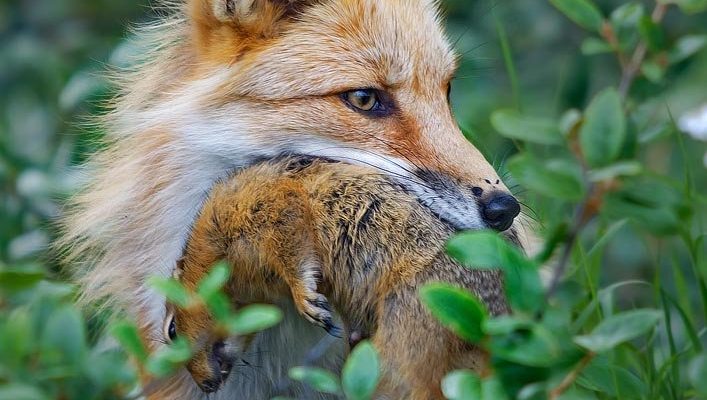
So, what exactly do red foxes eat, and how do they catch their meals? Imagine a suburban dinner party where the guests are diverse, and everyone has their own flavor preferences. Red foxes embody that variety in their diet. They are natural omnivores, which means they munch on both plants and animals. This adaptability is key to their survival, especially when food sources change with the seasons. Let’s dig deeper into the specifics of their diet and how they hunt.
Understanding the Red Fox Diet
Red foxes are opportunistic feeders. This means they eat whatever is available and what suits their taste buds at the moment. Their menu typically includes small mammals, birds, fruits, and vegetables. Think of them like the gourmet chefs of the animal kingdom, crafting meals from whatever they can find in their environment.
You might wonder what kinds of small mammals they prefer. Well, they’re particularly fond of rodents like mice, voles, and rabbits. These creatures are abundant in many habitats, making them a staple in the red fox’s diet. The foxes employ their sharp hearing to identify their prey, listening for the slightest rustle in the grass or a scurry of feet below the snow.
In addition to mammals, red foxes enjoy a variety of fruits and vegetables. During warmer months, they’ll munch on berries, apples, and grasses. These foods not only add some variety to their diet but also provide much-needed nutrients. When winter rolls in, and fresh fruits are hard to come by, these clever foxes adapt by scavenging for carrion or rummaging through garbage—a perfect example of their resourcefulness.
Hunting Techniques and Strategies
Hunting is an art form for the red fox. They have developed several fascinating techniques that make them skilled predators. One of the most notable is their pouncing technique. Picture this: a fox crouches low, its ears perked up and eyes locked onto its prey. Then, with a powerful leap, it springs into the air, landing right on top of its target. It’s like a furry little acrobat performing a perfectly timed stunt!
Another strategy they use is stealth. Red foxes are masters of camouflage, blending into their surroundings with their bushy tails and russet fur. They often wait patiently, staying completely still until the perfect moment to strike. This patience pays off, as it allows them to surprise unsuspecting prey, increasing their chances of a successful catch.
You might also find foxes hunting in pairs or small family groups, especially when taking down larger prey like rabbits. Working together, they can encircle their targets, making it harder for the prey to escape. This kind of teamwork showcases their intelligence and social behavior—traits that ultimately help them thrive in the wild.
Seasonal Changes in Diet
Just like we change our wardrobe with the seasons, red foxes adjust their diets too. In spring and summer, they feast on an abundance of small mammals and insects, like crickets and grasshoppers. Their keen senses help them find these tasty critters as they frolic through fields.
As fall approaches, things start to shift. With winter on the horizon, red foxes begin to stock up on calories, eating more fruits and scavenging more carrion to build fat reserves. This change is crucial as food becomes scarcer during the colder months.
When winter hits, red foxes rely heavily on their hunting skills. Snow can make it tricky to find food, but these adaptable creatures can use it to their advantage. They can track the movement of small mammals beneath the snow and use their keen senses to pinpoint exactly where to pounce. It’s a survival strategy that showcases their resilience in tough conditions.
The Role of Red Foxes in the Ecosystem
Red foxes play a vital role in maintaining balance in their ecosystems. As predators, they help control the populations of small mammals, which, if left unchecked, could lead to overgrazing of plants. This control is essential for maintaining healthy landscapes.
Moreover, when red foxes scavenge for food, they inadvertently help in the seed dispersal process. When they consume fruits, seeds can pass through their digestive systems and be deposited far from the parent plant. This acts like a natural gardening service, promoting plant diversity and growth in various areas.
You might be surprised to learn that their presence can signal a healthy ecosystem. A thriving population of red foxes often indicates a balanced environment, where prey is plentiful, and the habitat is rich with resources.
Challenges and Adaptations
Despite their prowess, red foxes face a number of challenges in the wild. Habitat loss due to urban development, hunting, and climate change can impact their food sources and living spaces. These pressures can force them to adapt quickly, often altering their behavior and hunting strategies.
For instance, in urban areas, red foxes have learned to scavenge from human waste and even hunt in parks. This adaptability showcases their intelligence and resourcefulness, allowing them to thrive in environments that are not always ideal.
However, their cunning nature doesn’t shield them from dangers. Predation from larger animals like coyotes or even domestic dogs can pose a threat. Additionally, car collisions are unfortunate risks they often face, especially in suburban areas. Awareness and education about these challenges can help reduce risks and protect these incredible creatures.
The journey of a red fox is a testament to nature’s adaptability and ingenuity. Their varied diet and clever hunting strategies highlight how they navigate the challenges of survival. By understanding how these fascinating creatures operate within their ecosystems, we gain insight into the delicate balance of life around us.
As you sip your coffee and think about these red-tailed wonders, remember their stories and struggles. Whether they’re stealthily hunting a meal or creatively adapting to urban life, red foxes remind us of the importance of resilience in the wild. Embracing their journey can inspire us all to appreciate the beauty of nature and the creatures that call it home.

